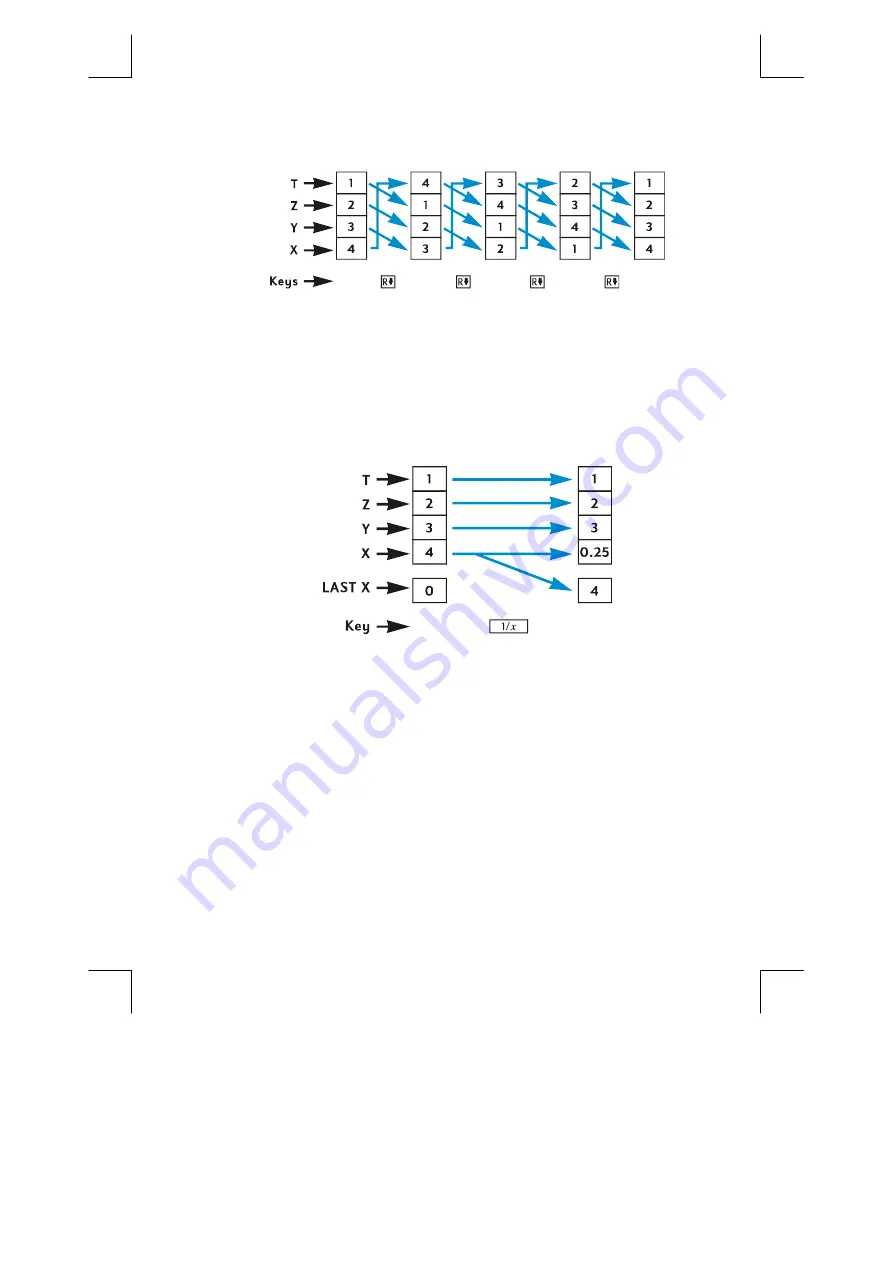
Appendix A: RPN and the Stack 231
File name: hp 12c pt_user's guide_English_HDPMF123E27 Page: 231 of 275
Printed Date: 2005/8/1
Dimension: 14.8 cm x 21 cm
One-Number Functions and the Stack
One-number mathematics and number-alteration functions —
y
,
r
,
°
,
>
,
¡
,
e
,
B
,
Ñ
, and
T
— use only the number in the displayed X-register.
When the key is pressed, the function is performed upon the number in the
X-register, and the answer is then placed into the X-register. The stack does not lift,
so the number formerly in the X-register does not get copied into the Y-register; but
this number is copied into the LAST X register. The numbers in the Y-, Z-, and
T-registers are not affected when a one number function is performed.
Two-Number Functions and the Stack
Two-number functions —
+
,
-
,
§
,
z
,
q
,
b
,
à
, and
Z
— use the
numbers in both the X- and the Y-registers.
Mathematics Functions
To perform an arithmetic operation, the numbers are positioned in the X- and
Y-registers just as you would write them vertically on paper: the number you would
write on top goes in the Y-register, and the number you would write on the bottom
goes in the X-register. For example, to do each of the four arithmetic calculations
shown below, you would put the 8 in the Y-register (using
\
and then key the 2
into the displayed X-register.)
















































